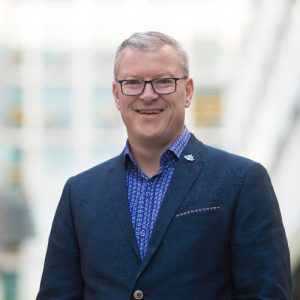Circular IT series - Vertiv: A datacentre report card, C+ 'could do better'
This is a guest post for Computer Weekly’s ‘circular IT economy’ series written by Simon Brady in his capacity as services channel business development manager for EMEA at Vertiv – a company known for its specialist services for designing, building and servicing critical infrastructure that enables vital applications for datacenters.
Brady writes as follows…
If a teacher were to mark the datacentre industry’s report card on the circular economy, it would probably read “C+, could do better”.
A popular viral audio clip (image link here, sound file not linked) that did the rounds in 2014 is of a Greek football coach talking about his team’s performance saying: “Sometimes, maybe good, sometimes, maybe $#1t!”…
This pretty much sums up the datacentre industry and its approach and direction towards a real circular economy.
That said, the same would describe pretty much every other industry. In many areas we are actually ahead of the game; in others we share the same pain of trying to do better.
The much-maligned (incorrectly in my opinion) Power Usage Effectiveness (PUE) metric can help us divide our industry in two: physical infrastructure and ICT.
For physical infrastructure we have been trying to drive down the number after the decimal place and for the most part we have been succeeding. ICT, the servers, compute, storage etc, represented by the “1” in PUE never changes and it is greatly ignored.
Refreshing ICT for circularity
Our biggest challenge is moving the ICT side of our industry towards a real circular economy. ICT refresh rates can be as low as 12 months. As a society, if we want all the progress that this rapid change in technology brings, we must address how we can better reduce, reuse and recycle the hundreds of thousands of servers, storage and network components that are made obsolete every year.
On the physical infrastructure side we have been mindful to get the most out of the building and equipment used to create datacentres; reliability and longevity being the key to uptime and high availability. From the design through to the long-term operation of equipment, the idea of single-use or throw-away infrastructure is never considered. Our challenge is to design and develop buildings that will last a minimum of 30 years, whilst allowing the data processing and storage within it to change almost yearly.
As a global manufacturer of many of the key components within data centres, we look to ensure that our own [Vertiv] solutions can not only stand the test of time but also be capable of refresh and repair during their lifetime.

Vertiv’s Brady: Let’s refresh & repair instead of rip & replace.
Having led our optimisation business for a number of years, I have been at the forefront of upsetting sales people trying to sell new equipment to customers when a simple upgrade or refresh was all that was required.
For example, a 20 year old air-conditioning system can have many of it’s components upgraded and refreshed rather than replaced entirely. Even when such systems do come to the end of their life almost all of the components are readily recyclable.
Cold war bunkers & aircraft hangers
When it comes to physical buildings, we have a great track record of reusing/converting existing facilities, often from completely unrelated industries. We have datacentres in disused churches, old bank vaults, cold war bunkers and aircraft hangers.
There is always more to do but we have a great community helping to create and set sustainable and environmental standards for our industry. PUE was an early attempt to address the efficient use of energy.
Many of our current standards and codes of conduct are aimed at everyone making small, incremental differences over time.
Unfortunately, there is no silver bullet to turn a datacentre into a 100% carbon neutral, fully sustainable and recyclable facility overnight. Changing bad habits of the past and ensuring best practice is not only discussed but truly implemented is our best way forward.
Our industry has aligned itself closely with the goals of the UN, European Union and almost every other developed nation to get to net zero and operate with a sustainable circular economy. In many areas we are well placed to achieve these goals – even exceed them – but there is work to do.
The good news is the work is being done across our entire industry with passion and enthusiasm.



